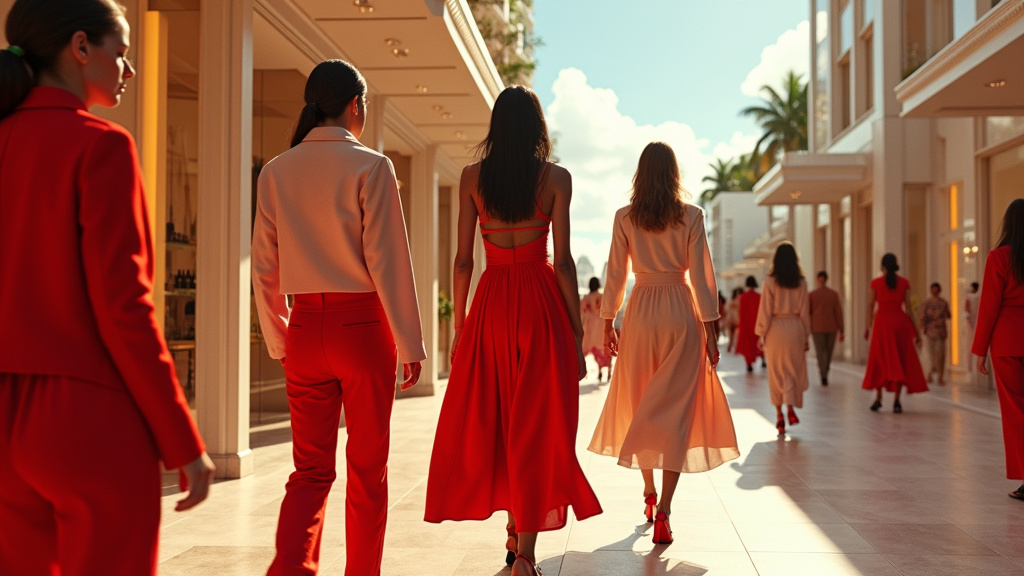LVMH Commits to Accelerated Sustainable Sourcing: Setting a Bold 2030 Target
Paris, France – LVMH Moët Hennessy Louis Vuitton, widely recognized as the world’s largest luxury conglomerate, announced on January 20, 2025, a significant and accelerated commitment to environmental responsibility across its vast portfolio of esteemed brands. This strategic declaration signals a heightened focus on sustainable practices within the high fashion and luxury goods sectors, responding to both evolving global pressures and increasing consumer expectations.
Under the latest iteration of its comprehensive environmental roadmap, the LIFE 360 (LVMH Initiatives For the Environment) program, the luxury group has set a highly ambitious new target. By the year 2030, LVMH aims to source a remarkable 75% of all materials used across its diverse collection of Maisons from either recycled streams or sources holding recognized sustainability certifications. This represents a substantial increase and acceleration compared to the group’s previously established targets, underscoring a heightened urgency and commitment to reducing its environmental footprint.
A Conglomerate-Wide Transformation
The scope of this accelerated target is expansive, covering the myriad materials that define luxury production, from textiles and leather goods to precious metals and packaging. The goal applies universally across LVMH’s prestigious brands, which include iconic names like Louis Vuitton, Dior, and Celine, among many others spanning fashion, jewelry, watches, perfumes, cosmetics, and wine & spirits. Achieving the 75% threshold by 2030 will require a fundamental transformation of supply chains and material sourcing strategies at an unprecedented scale for the conglomerate.
The commitment to sourcing from recycled or sustainably certified origins involves stringent criteria. Recycled materials encompass post-consumer waste or industrial scrap diverted from landfills and reprocessed into new inputs. Sustainably certified materials refer to raw materials sourced from operations that adhere to recognized environmental and social standards, validated by independent third parties. This could include certifications related to responsible forestry (like FSC), organic farming, sustainable fishing, or ethical mining practices, depending on the specific material type.
Specific Actions and Phasing Out
Beyond the overarching 75% target, the updated LIFE 360 program outlines specific actions designed to tackle particular environmental challenges within material sourcing. A notable example included in the announcement is the planned phasing out of certain non-certified animal fibers by 2028. This targeted action indicates a focus on enhancing traceability and ensuring animal welfare and environmental best practices within complex supply chains for materials like wool, cashmere, or exotic skins, should they continue to be used. By prioritizing certified sources, LVMH aims to gain greater transparency and control over the social and environmental conditions under which these fibers are produced, further reinforcing its commitment to ethical production.
This move towards greater certification and traceability across animal-derived materials reflects an industry-wide trend and increasing scrutiny from consumers and non-governmental organizations regarding the provenance and impact of such inputs. By setting a clear deadline of 2028 for phasing out non-certified options, LVMH is signaling its intention to drive change deeper within its supply chain and collaborate more closely with suppliers who meet rigorous sustainability standards.
Responding to External Pressures: Regulation and Consumer Demand
The decision to accelerate these sustainability targets is explicitly linked to external drivers. The announcement highlights that the move anticipates stricter global regulations concerning environmental impact, supply chain transparency, and corporate social responsibility. Governments and international bodies are increasingly implementing mandates that require companies, particularly large corporations, to demonstrate responsible sourcing and production practices, disclose environmental data, and take accountability for their value chains. By proactively raising its own standards, LVMH positions itself ahead of potential regulatory requirements, mitigating future compliance risks and reinforcing its leadership stance in the luxury industry.
Furthermore, the accelerated targets respond to increasing consumer demand for traceability and ethical production in high fashion. Today’s luxury consumers, particularly younger demographics, are more informed and concerned about the environmental and social impact of their purchases. They seek assurance that the products they buy are not only of exceptional quality and craftsmanship but are also made responsibly, respecting both the planet and the people involved in their creation. The demand for greater transparency about where materials come from and how they are produced is growing, and brands that can credibly demonstrate their commitment to sustainability are gaining a competitive edge.
By setting a bold 75% target for recycled or certified materials by 2030 and outlining specific steps like the 2028 phase-out for certain fibers, LVMH aims to build trust with its customers and meet their evolving expectations for more sustainable and ethical luxury goods. This strategic alignment of business goals with environmental and social responsibility reflects a maturing understanding within the luxury sector that sustainability is no longer a niche concern but a core component of brand value and long-term resilience.
The Significance of the LIFE 360 Program
The LIFE 360 program, first launched in 2021, provides the overarching framework for LVMH’s environmental strategy. It is structured around four key pillars: Creative Circularity, Traceability & Transparency, Climate Action, and Biodiversity Preservation. The January 20, 2025, announcement specifically reinforces the Creative Circularity and Traceability & Transparency pillars by focusing intensely on the origin and nature of raw materials. The original LIFE 360 roadmap already included targets for materials, but the updated commitment to 75% by 2030 signifies a significant stepping-up of ambition, pushing the group to move faster and implement more pervasive changes across its intricate global supply network.
Achieving a 75% sustainable sourcing rate for a conglomerate the size and complexity of LVMH is a monumental undertaking. It requires close collaboration with thousands of suppliers worldwide, investment in new technologies and processes for recycling and certification, and potentially a redesign of products to facilitate material transitions. The target highlights the luxury industry’s potential to drive change within global supply chains due to its significant purchasing power and influence.
In conclusion, LVMH’s accelerated target of sourcing 75% recycled or sustainably certified materials by 2030, announced on January 20, 2025, represents a pivotal moment in its environmental strategy and for the luxury sector as a whole. This move, underpinned by specific actions like the 2028 phase-out of certain non-certified animal fibers, is a proactive response to anticipated regulations and the clear signal from consumers demanding greater traceability and ethical production in high fashion. By embedding sustainability deeper into the core of its sourcing practices, LVMH aims to redefine luxury for a new era, balancing exquisite craftsmanship with responsible environmental stewardship.





